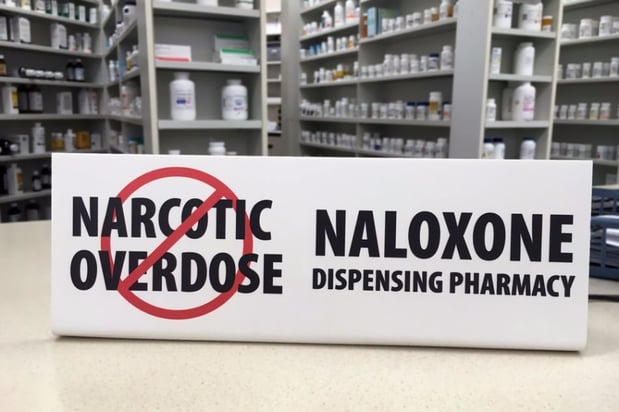The brands Narcan, sold in the form of a nasal spray, and Evzio, sold as an injectable, are both equally effective deliverers of the life-saving opioid overdose antidote, naloxone. This drug, according to the Centers for Disease Control and Prevention, was able to reverse more than 10,000 cases of opioid overdose between 1996 and 2010.
Despite criticism, Walgreens Pharmacy began selling naloxone over the counter in 35 U.S. states and Washington D.C. last year, now making it more accessible to those who need it. Notably, Naloxone’s sole purpose is to reverse the effects of an opioid overdose and has no effect if there are no opioids present in the body.
What Happens During an Opioid Overdose?
The opioid family includes drugs derived from opium. They’re accessed legitimately through a doctor’s prescription, usually for pain control. Here are some of its most popular forms.
- heroin
- morphine
- oxycodone
- methadone
- fentanyl
- hydrocodone
- codeine
- hydromorphone (Dilaudid)
- desomorphine
- meperidine (Demerol)
Opioids work on brain proteins with special receptors that, if unlocked, release particular biochemical reactions. Like keys, opioids seek out these receptors, latch on and unlock them. As the drug repeatedly opens and shuts this lock, it loosens a barrage of biochemistry into the nerve cells. This is the basic process of getting high, producing sensations of euphoria, pain relief and addiction.
Opioids also cause the body to slow down. When too much of the drug is taken, the “keys” overwhelm the locks causing breathing and heart rate to decrease to dangerous levels. This is the definition of an overdose. As the person’s heart rate continues to drop, death becomes imminent. If naloxone is administered in time, it can counter the effects of overdose and save the person’s life.
Naloxone’s Side Effects
According to the National Institute on Drug Abuse, the side effects of naloxone are quite benign compared to an opioid overdose. It may cause withdrawal symptoms in some people, which are uncomfortable, but not life-threatening. Withdrawal symptoms may include blood pressure fluctuation, headache, rapid heartbeat, perspiration, nausea and tremors.
Critics of naloxone say it gives drug abusers a safety net, therefore encouraging them to push through more exhilarating highs. There are no known studies to support such claims, although it is true that some users have used naloxone several times and, each time, the drug has reversed what would have been death by overdose.
Naloxone’s advocates, which include the medical community and the White House drug office, believe that what this antidote truly provides is a chance for opioid abusers to get into treatment and finally straighten out their lives. And now that it is more readily available, it is the country’s hope that the number of those who’ve been revived and found recovery will grow. If you or someone you know is seeking help from opioid addiction, please visit our directory of nearby opiate and detox treatment centers or call 866-606-0182 to start the path to recovery today.








